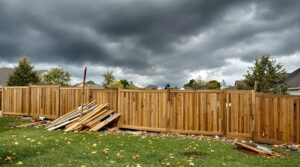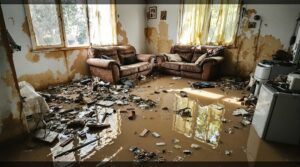Property insurance provides essential protection for various types of assets against specific perils and financial losses. Common types include homeowners insurance, which covers dwellings and personal property; rental property insurance, protecting landlords’ investments and rental income; condo insurance, complementing HOA master policies; and flood insurance for water damage protection. Each type offers distinct coverage levels for structural damage, personal belongings, and liability protection. Cost-saving strategies include policy bundling, security system installation, and proper maintenance. Understanding the nuances of different coverage options helps property owners make informed decisions to safeguard their investments effectively.
Key Takeaways
- Homeowners insurance protects your dwelling, personal belongings, and provides liability coverage while covering additional living expenses during repairs.
- Rental property insurance safeguards landlords against property damage, liability claims, and loss of rental income during repairs.
- Condo insurance complements HOA master policies by protecting personal property and interior structures while providing unit-specific liability coverage.
- Flood insurance specifically covers water damage from rising floods, including structural damage and temporary living expenses.
- Property insurance policies typically require deductibles and can be customized with additional endorsements for specific risks.
Understanding Property Insurance Basics
Property insurance serves as a fundamental protection mechanism that safeguards assets against various risks and potential losses. Despite common insurance myths, this essential coverage encompasses multiple forms of protection, including structural damage, personal property, and liability coverage for injuries occurring on the insured property.
When making coverage comparisons, it’s imperative to understand that property insurance typically protects against specific covered perils, such as fire, smoke, wind, hail, vandalism, and theft. Each policy type offers distinct levels of protection based on the property’s characteristics and the policyholder’s needs. The coverage framework generally includes a deductible that must be met before insurance benefits activate, making it essential for property owners to carefully evaluate their coverage options and understand their financial responsibilities in the event of a claim. Additionally, engaging a public adjuster can significantly enhance your understanding of insurance policy complexities, ensuring that you receive fair compensation when filing a claim.
Homeowners Insurance Coverage
Standard homeowners insurance represents the cornerstone of residential property protection, offering extensive coverage for both structural elements and personal belongings within a home. A thorough homeowners policy typically encompasses multiple layers of protection, with coverage limits tailored to the property’s value and the owner’s needs.
Key components of homeowners coverage include:
- Dwelling protection for the main structure and attached structures
- Personal property coverage for belongings, furniture, and valuables
- Liability protection against injuries or accidents on the property
- Additional living expenses coverage during repairs
Understanding these fundamental aspects helps homeowners make informed decisions about their insurance needs. Coverage limits should align with replacement costs, ensuring adequate protection against potential losses while maintaining financial security for the property owner’s investment. Additionally, engaging public adjusters can enhance the likelihood of successful claims and maximize compensation for damages incurred during property incidents.
Protecting Your Rental Property

Securing extensive insurance protection for rental properties involves three vital aspects: property coverage, liability protection, and loss of rental income coverage. Property owners must guarantee all-encompassing protection against structural damage, while also addressing tenant responsibilities and maintaining adequate liability coverage for potential injuries or accidents on the premises.
Regular property maintenance plays a significant role in risk mitigation, helping prevent costly claims and guaranteeing the property remains in compliance with local housing codes. Landlords should implement thorough screening processes and require tenants to maintain renters insurance, creating an additional layer of protection. A well-structured insurance policy should also include provisions for lost rental income during property repairs, ensuring financial stability when units become temporarily uninhabitable due to covered losses. Additionally, engaging with public adjusters for condo associations can enhance claims management and recovery efforts in case of significant damages.
Condo Insurance Essentials
While rental properties require specific insurance considerations, condominium ownership presents its own unique set of insurance requirements. Condo owners need specialized coverage that complements their HOA’s master policy while protecting their individual interests.
Essential condo insurance benefits include:
- Personal property protection for belongings within the unit, from furniture to electronics
- Interior structural coverage for walls, floors, and built-in fixtures not covered by HOA insurance
- Liability protection for accidents or injuries that occur within the unit
- Loss assessment coverage for shared expenses when HOA master policy limits are exceeded
Understanding these components is vital for condo ownership, as standard HOA coverage typically protects only the building’s exterior and common areas. This targeted protection guarantees owners maintain thorough coverage for their specific needs within the shared property environment.
Mobile Home Coverage Options
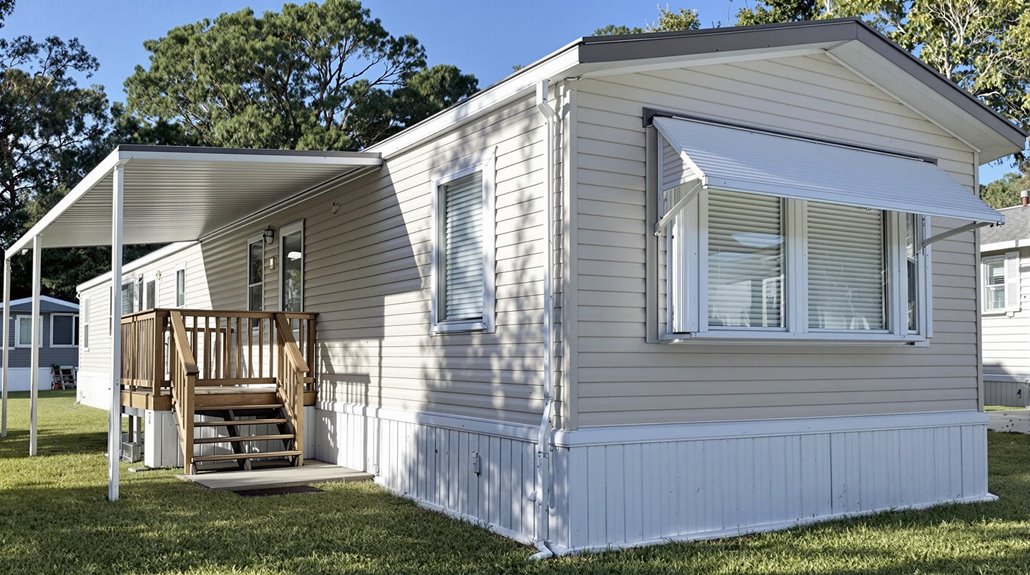
Manufactured home insurance provides specialized protection designed to address the unique vulnerabilities and characteristics of mobile homes. This coverage aligns with mobile home regulations while offering extensive protection against common risks and perils.
| Coverage Type | Standard Home | Mobile Home |
|---|---|---|
| Valuation Method | Replacement Cost | Actual Cash Value |
| Transportation | Not Included | Coverage Available |
| Storm Protection | Standard | Enhanced Options |
Unlike traditional homeowners insurance, mobile home policies factor in the unique construction, installation requirements, and potential mobility of manufactured homes. Coverage comparisons reveal key differences, particularly in how claims are valued and settled. While standard homes typically receive replacement cost coverage, mobile homes are often insured for actual cash value, accounting for depreciation in the settlement process.
Flood Insurance Fundamentals
Flood insurance fundamentally differs from standard property insurance by specifically protecting against water damage caused by rising flood waters. This specialized coverage addresses the unique flood risk that many property owners face, particularly in designated flood zones where such protection is federally mandated.
Key aspects of flood insurance include:
- Coverage for structural damage to buildings from flood-related events
- Protection for personal belongings affected by rising waters
- Assistance with temporary living expenses during repairs
- Support for flood insurance claims processing and documentation
Understanding flood insurance is vital for property owners, as standard policies typically exclude flood damage. For those in flood-prone areas, this coverage provides essential financial protection against one of nature’s most destructive forces, helping maintain property values and peace of mind within affected communities.
Earthquake Protection for Properties
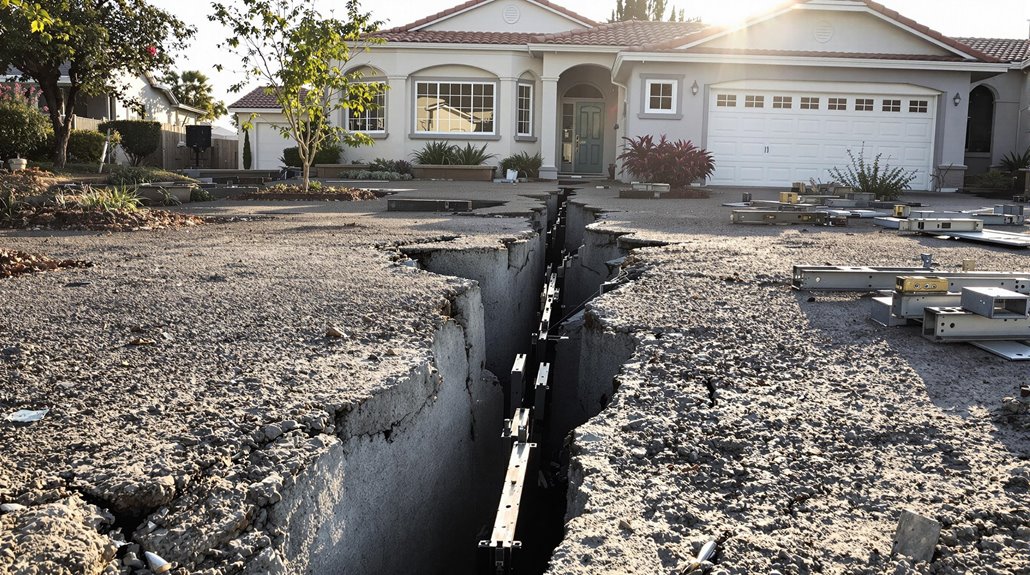
Since standard property insurance policies rarely include earthquake coverage, property owners must specifically acquire earthquake protection to safeguard their investments against seismic events. Earthquake insurance covers structural damage, personal belongings, and temporary living expenses if a home becomes uninhabitable due to seismic activity.
Effective earthquake preparedness extends beyond insurance to include seismic retrofitting measures, such as reinforcing foundations and securing heavy fixtures. Coverage amounts typically reflect the property’s location, construction type, and soil conditions. Deductibles often range from 10% to 20% of the coverage limit, considerably higher than standard homeowners insurance deductibles. Property owners in seismically active regions should carefully evaluate their risk exposure and consider thorough earthquake protection to guarantee financial security during geological events.
Loss Assessment Coverage Details
Loss assessment coverage serves as a critical component of property insurance that protects homeowners and condo owners against shared financial responsibilities within their associations. This specialized coverage becomes particularly valuable when damages to shared property exceed the master policy limits, ensuring property owners aren’t burdened with unexpected costs.
- Coverage typically ranges from $1,000 to $50,000, addressing assessments from covered perils
- Applies to shared property elements including roofs, pools, and common areas
- Activates when master policy limits are exhausted due to significant damage events
- Requires formal documentation from the association before claims processing
Understanding loss assessment coverage helps property owners better manage their risk exposure within communal living arrangements, protecting against substantial out-of-pocket expenses when shared property repairs become necessary.
Liability Protection for Property Owners
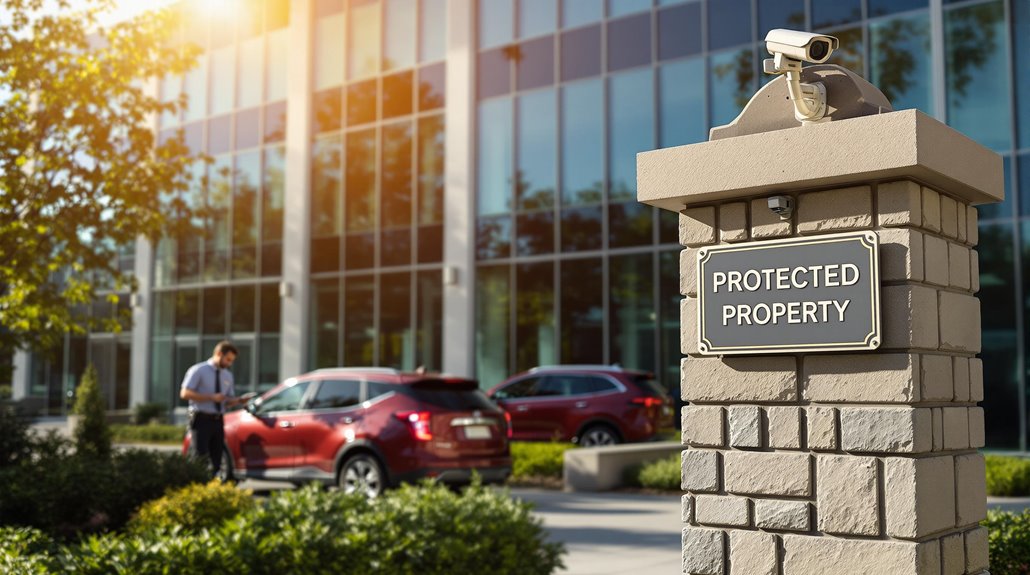
Beyond protecting physical assets, property owners must consider the significant risks associated with personal liability claims. Thorough liability protection safeguards against legal expenses and medical costs arising from incidents occurring on the property. This coverage extends to property disputes, injuries sustained by visitors, and accidents involving contractors or service providers.
Standard liability coverage typically ranges from $100,000 to $500,000, though many property owners opt for additional umbrella policies for enhanced protection. The coverage addresses legal defense costs, settlements, and medical payments for injured parties. Property owners with high-value assets or frequent visitors should consider increasing their liability limits to guarantee adequate protection against potential lawsuits and claims that could otherwise jeopardize their financial security.
Choosing the Right Coverage
Determining the appropriate property insurance coverage requires careful evaluation of multiple factors, including property value, location, and personal risk tolerance. When conducting policy comparisons, consider these essential elements to guarantee thorough protection:
- Assess replacement cost versus actual cash value coverage options based on your property’s characteristics and financial objectives.
- Review coverage limits for structures, personal property, and liability to guarantee they align with your assets.
- Evaluate additional endorsements needed for specific risks like floods, earthquakes, or valuable items.
- Calculate deductible amounts that balance monthly premium costs with out-of-pocket expenses.
Understanding these components enables informed decisions about coverage levels and policy types. Working with insurance professionals can help identify potential gaps and guarantee your chosen coverage provides adequate protection for your specific situation while maintaining cost-effectiveness. Additionally, engaging a public adjuster can enhance your claim outcomes by ensuring you receive fair compensation when filing a property insurance claim.
Cost-Saving Insurance Strategies

Several effective strategies exist for property owners to reduce their insurance costs while maintaining thorough coverage. By implementing proven discount strategies and exploring bundling benefits, policyholders can enhance their insurance expenditure while ensuring extensive protection.
| Strategy | Savings Potential | Implementation |
|---|---|---|
| Bundle Policies | 15-25% | Combine home and auto coverage |
| Security Systems | 5-20% | Install monitored alarms |
| Home Updates | 10-15% | Upgrade roof, plumbing, electrical |
Understanding and leveraging available cost-reduction opportunities requires careful evaluation of current policies and provider offerings. Strategic improvements to property safety features, maintaining good credit, and increasing deductibles can lead to substantial premium reductions. Additionally, loyalty programs and professional association memberships often provide access to exclusive discounts, making it worthwhile to explore these options when seeking optimal protection at competitive rates. Engaging with public adjusters can further help policyholders navigate their insurance claims effectively, potentially leading to higher settlements.
Risk Management for Properties
Effective risk management for properties encompasses four fundamental components: identification, assessment, mitigation, and monitoring of potential threats to real estate assets. Regular risk assessment evaluations help property owners maintain asset value while reducing potential insurance claims.
- Conduct systematic property maintenance inspections to identify structural vulnerabilities, safety hazards, and potential compliance issues.
- Implement preventive maintenance schedules that address roofing, plumbing, electrical systems, and drainage requirements.
- Document all maintenance activities, repairs, and improvements to establish a clear record for insurance purposes.
- Install security systems, fire prevention equipment, and weather protection measures based on location-specific risks.
These proactive strategies create an all-encompassing approach to property protection, ultimately reducing exposure to losses and potentially lowering insurance premiums while preserving long-term property value. Additionally, engaging with a public adjuster can significantly enhance the effectiveness of your insurance claims management process.
Frequently Asked Questions
Can I Get Property Insurance With a History of Previous Claims?
Property insurance remains available with previous claim history, though premiums may increase. Insurance options vary by provider, with some specializing in high-risk policies for those with multiple claims.
How Does Property Insurance Handle Damage From Nuclear Accidents or War?
Ever wondered about extreme catastrophic events? Standard property insurance policies typically contain nuclear exclusions and war clauses that explicitly exclude coverage for damages resulting from nuclear accidents or acts of war.
What Happens to Property Insurance Coverage During Home Renovation Projects?
Property insurance may require modification during renovations to address increased renovation risks and potential coverage limits. Homeowners should notify insurers before major projects to maintain adequate protection.
Are Wild Animal Damages Covered Under Standard Property Insurance Policies?
Like a roll of dice, wild animal damage coverage varies widely. Standard policies typically contain wildlife exclusions, though some offer limited animal liability coverage for specific scenarios.
Do Security System Installations Affect Property Insurance Premiums Across Different Providers?
Most insurance providers offer premium discounts for professionally installed security systems, typically ranging from 5-20% off annual premiums, depending on system features and monitoring capabilities.
Final Thoughts
Property insurance remains essential for protecting valuable assets against diverse risks and liabilities. Recent data from the Insurance Information Institute indicates that 95% of homeowners carry insurance, while only 37% of renters maintain coverage despite similar risk exposures. Selecting appropriate coverage requires careful evaluation of property type, location-specific risks, and coverage limits. Implementing strategic risk management practices alongside extensive insurance coverage provides ideal protection for property investments.

